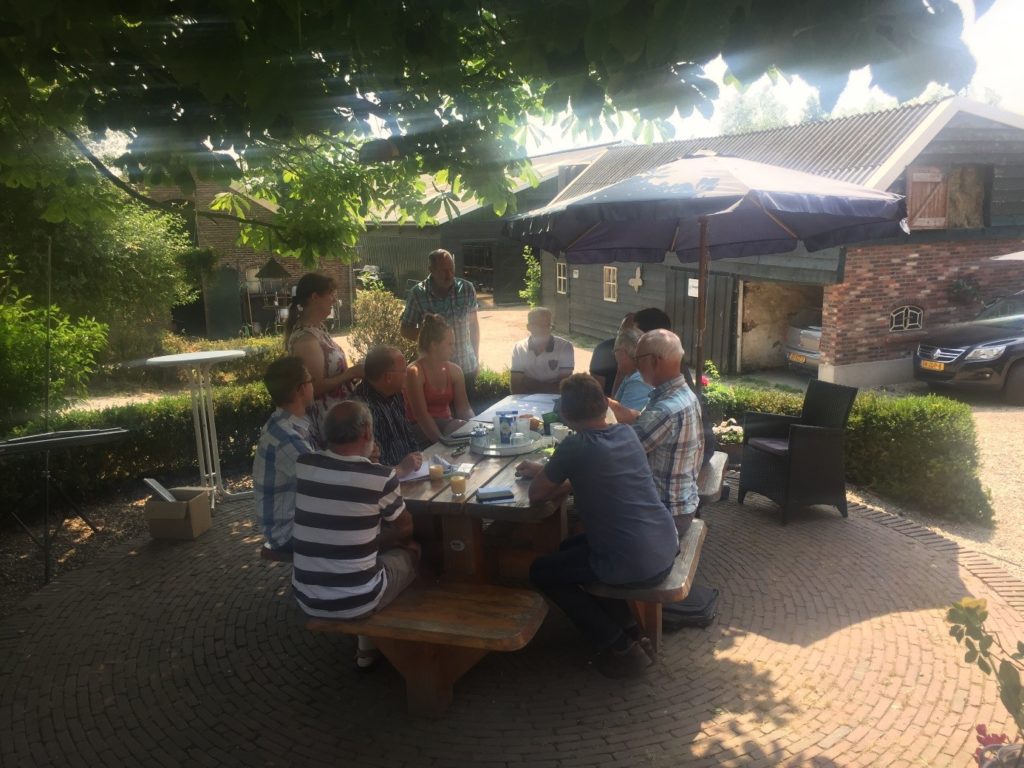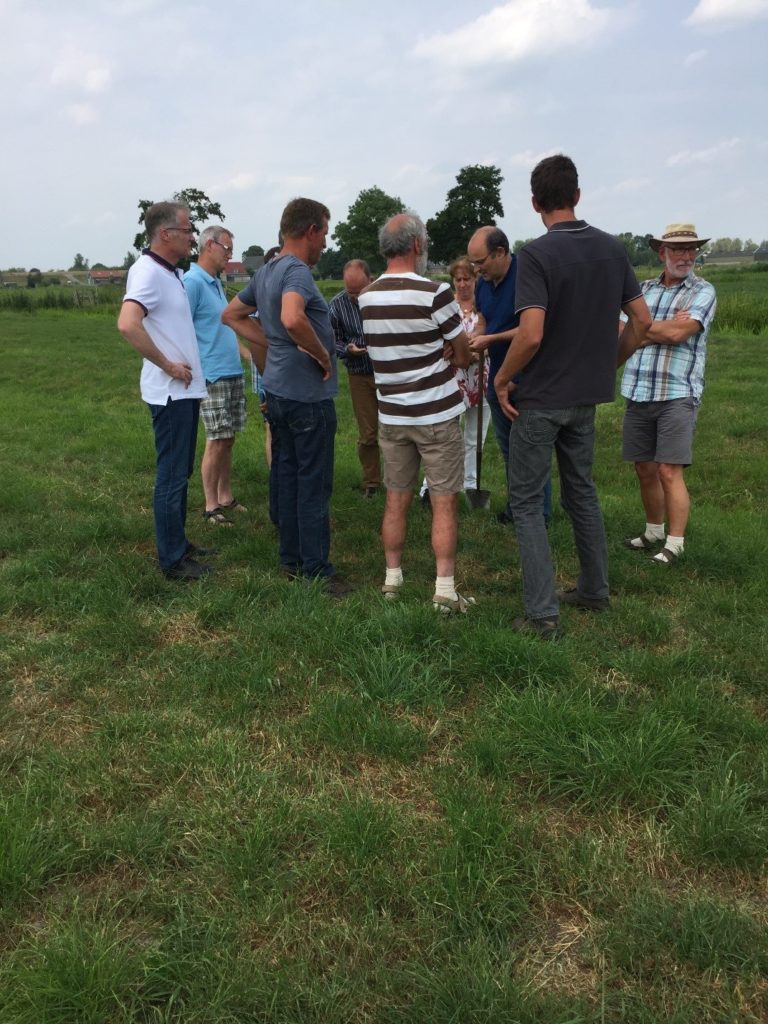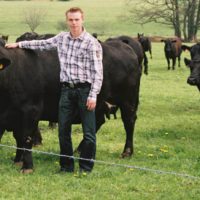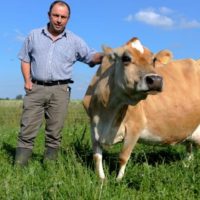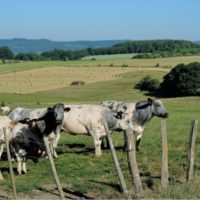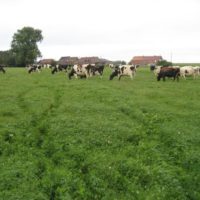Herb-rich grassland on peat soil
Practice abstract
Description
The main species in Dutch grasslands is perennial ryegrass. Including herbs in Dutch grasslands for attracting meadow birds is innovative. The pros and cons of herb-rich grasslands were discussed in a meeting of scientists and practitioners on a farm on peat soil in the Alblasserwaard in the Netherlands. Scientific insights were summarised and can be found at http://www.louisbolk.org/downloads/3258.pdf. A long grazing season and improving the amount of meadow birds are the main goals of the visited farmer. Herb-rich grasslands were analysed during the meeting in a SWOT-analysis:
- Strengths: improved animal health, better soil quality, higher biodiversity (e.g. insects and meadow birds), lower costs
- Weaknesses: lower protein yield per ha, lower forage quality, possibility of ‘poisonous’ herbs
- Opportunities: system valued by society, higher milk price, higher biodiversity, financial compensation for more nests of meadow birds
- Threats: inconsistent regulations and subsidies, not all herbs are suitable for peat soil (due to pH)
The farmer was positive about the inclusion of herb-rich grasslands in his farming system and will continue to work with this system. The following recommendations were given to further improve the system: rotation of maize and herb-rich grasslands; sowing of the newest and most optimal seed mixtures for meadow birds with herbs that are currently available on the market; consider using only specific parts of the land for herb-rich grassland (for example near ditches or in corners). It was concluded that more research is needed on the management of herb-rich grasslands, the benefits of herb-rich grasslands and, specifically for peat soil, on optimal seed mixtures.
Abstract also available in:
Dutch | French | German | Italian | Polish | Swedish
Additional information
| Farming system | conventional farming |
|---|---|
| Domains of innovation | farm system, landscape |
| Main types of animal | dairy cattle |
| Country | The Netherlands |
| Product type | Practice abstract |
| Language | English |

